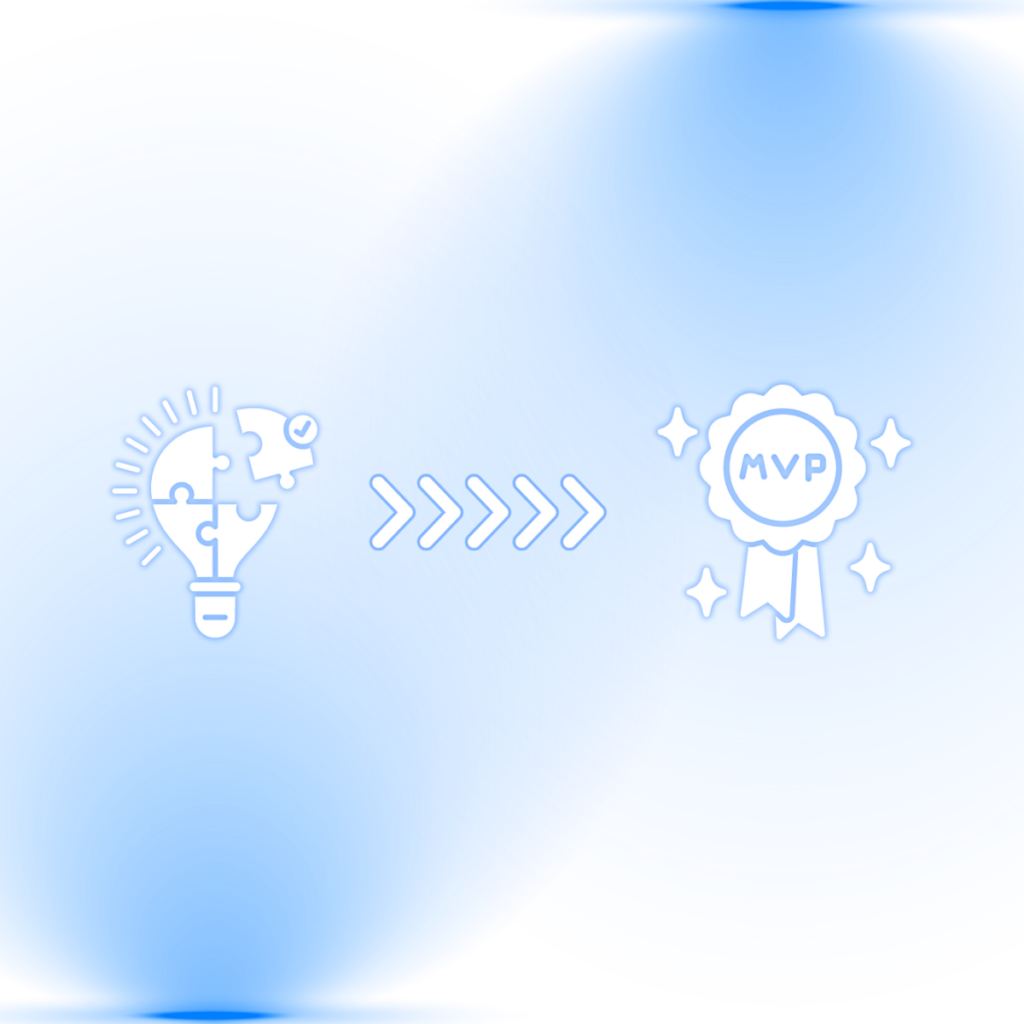From Idea to MVP: Essential Steps for Startup Success

For early-stage startups, transforming a vision into a tangible product can be both exciting and challenging. The journey from an idea to a Minimum Viable Product (MVP) involves strategic planning, prioritizing key features, and choosing the right path for growth. Without a clear roadmap, many startups struggle to bring their concepts to life efficiently.
At Omnipreneur, we help founders turn ideas into scalable MVPs that align with market needs. Here’s our essential step-by-step guide to help startups successfully navigate this journey.
1. Identifying Market Needs and Refining Your Idea
Every great product begins with a clear understanding of the market and a well-defined problem to solve. The initial step in creating an MVP is to validate your idea and identify genuine market needs.
1.1. Define Your Vision and Target Audience
Start by clearly defining the problem your product aims to solve and who your target audience is. Conduct qualitative research (interviews and focus groups) and quantitative research (surveys and social media analytics) to gain insights into your potential customers’ pain points and preferences.
1.2. Identify Market Gaps and Opportunities
Analyze competitors to identify gaps in the market. Use tools like SWOT analysis and Porter’s Five Forces to assess their strengths and weaknesses, and to uncover opportunities where your product can stand out. By refining your unique value proposition (UVP), you’ll have a clear idea of what sets your product apart.
2. Strategizing Your MVP Development
An MVP shouldn’t be overloaded with features; its purpose is to provide a core solution efficiently and effectively. Here’s how we help you define and build your MVP.
2.1. Prioritize Key Features
With insights from your market analysis, prioritize the essential features that provide the most value to your audience. We use frameworks like the MoSCoW method to categorize features based on their importance and impact.
2.2. Create Wireframes and Prototypes
Sketching wireframes helps visually outline the MVP’s structure and layout. Wireframes serve as a communication tool among stakeholders, ensuring everyone is aligned before moving into development. Prototypes allow for early user testing and valuable feedback, guiding further refinements.
3. Building and Collaborating with an Agile Approach
Developing an MVP is a collaborative journey, and using an agile approach allows flexibility and adaptability to changing requirements.
3.1. Choose the Right Tech Stack for Scalability
Selecting a tech stack is crucial for both current needs and future scalability. We help you choose technologies based on cost-efficiency, community support, and future-proofing, ensuring your product can evolve as your startup grows.
3.2. Agile Development for Flexibility
Agile methodologies keep the development process responsive and adaptable to user feedback. At Omnipreneur, we prioritize communication through regular updates and feedback loops, ensuring everyone stays aligned and informed.
3.3. Foster Open Collaboration
We believe that building an MVP is a team effort. We work closely with your team to maintain alignment with the project’s vision. Our focus on open communication and a shared vision ensures the final product meets your goals.
4. Launching and Scaling Your MVP with Confidence
Launching an MVP requires a strategic approach and the ability to adapt based on early user feedback.
4.1. Plan and Execute a Strategic Launch
Launching is not just about releasing a product; it’s about executing a well-planned strategy. We start with a soft launch to gather early feedback and refine the MVP before a broader rollout. We work with you on everything from UX and UI design to marketing initiatives.
4.2. Collect Data and Iterate for Growth
Post-launch, we collect and analyze user data to understand how customers interact with the MVP. Key metrics like engagement and conversion rates guide us in making iterative improvements to enhance the product’s value.
4.3. Prepare for Scalability from Day One
Scalability is a cornerstone of our approach. We design modular, cloud-based architectures that allow your MVP to scale smoothly as demand grows. This future-proof approach prevents costly overhauls down the road.
5. Choosing the Right Growth Path: CTO-as-a-Service or Long-Term Tech Partner
At Omnipreneur, we offer tailored solutions for startups that want to scale beyond the MVP stage. Depending on your needs, we provide two key paths:
5.1. CTO-as-a-Service: Strategic Leadership
If you already have a development team but need strategic leadership, our CTO-as-a-Service option is ideal. We provide a dedicated CTO to guide your team, mentor junior developers, and ensure that all technical decisions align with your long-term vision.
5.2. Long-Term Tech Partner: End-to-End Development
For startups focusing on business growth, we offer long-term technical partnerships. We handle the entire development lifecycle, integrating new features, scaling the infrastructure, and providing ongoing support.
Conclusion: Your Path to Startup Success
Building a successful MVP is about more than just an idea; it’s about understanding your market, strategically planning your product, and maintaining flexibility throughout the journey. At Omnipreneur, we don’t just build products—we build partnerships that help startups thrive.
Ready to turn your idea into a successful MVP? Contact us today for a free consultation and let’s start building something extraordinary together. 🚀